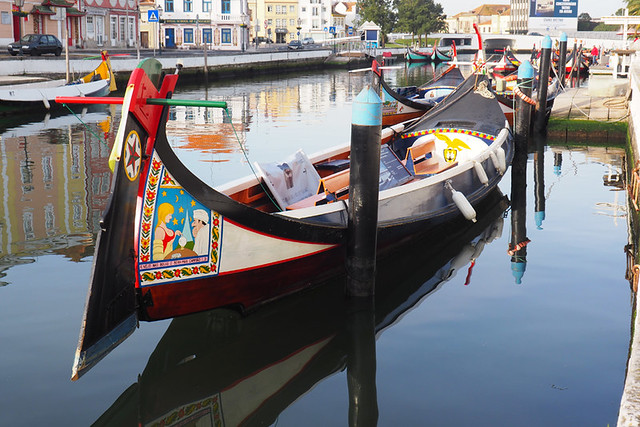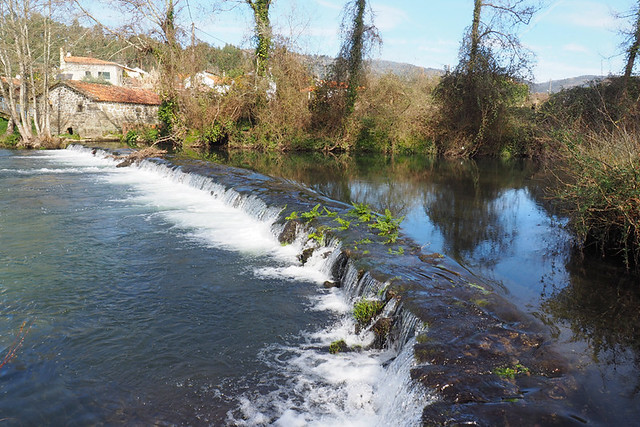Taking my mother back to Faro Airport from Setúbal (currently there are no direct flights between Glasgow and Lisbon, so a 490km round trip to the Algarve airport it is) I was reminded of a road trip in the opposite direction earlier in the year. Between Setúbal and the Algarve there is nothing except the sprawling Alentejo countryside – stone pines, olive trees, golden plains and some sheep and cattle. Heading north from the same starting point reveals a quite contrasting scene.
Our mission was to introduce two of our Inntravel friends and colleagues, who didn’t know Portugal, to some of the highlights of their holidays here, as well as making a few minor improvements and picking up tips about their latest methods for writing precise walking route directions. This was also meant to showcase why Portugal is such a popular holiday destination. But not everything went exactly to plan.

Arrabida and the Setúbal Peninsula
It starts like a dream; cloudless skies and temperatures in late February which are warm enough for short sleeves, if you’ve just arrived from the north of England. Andy and I stick with long sleeves. We eat lunch at Santiago Fort on Sesimbra’s golden sands which are empty save for a couple of surfers. It’s ideal weather for an introduction to Arrabida Natural Park, the setting for a new Inntravel walking holiday. To give our colleagues a taster we set off on a circular walking route which starts in a small village. Within a few hundred metres our colleagues are stumped. Our directions don’t match the layout on the ground. We’re bemused as well. We walked it a couple of weeks previously and it was fine then, or so we thought. It makes us look totally incompetent, not really the impression we’d aimed for. The mystery is solved a couple of weeks later when we discover the Portuguese Army have been ‘rearranging’ the landscape to make tracks for fire trucks, precautions for tackling forest fires. It becomes a route which changes constantly over the following couple of months, until the soldiers finish the job. This sort of unexpected development is one of the perils of writing walking directions.

Heading north
The road north starts with Lisbon’s Vasco da Gama Bridge, a spectacular way to cross the Tagus. On the one side are salt pans, flamingos, and fishermen. On the other, one of the most exciting cities in Europe. Whilst the landscape north of Lisbon isn’t an industrial one, it is more urban than the road south to the Algarve. As well as eucalyptus forests and whitewashed villages hugging hillsides we pass curios, garish signs for escort motels and the funkiest looking football stadium built for Euro 2004. We swap the motorway for the coast just north of Coimbra, heading to Videira to take a look at the route of a cycling holiday.

The Venice of Portugal
In February, Videira has an out of season ambience. Yet another endless Portuguese beach is virtually empty of people. On the sands a bike leans against an old wooden cart on which fishing nets are piled high. We ponder if it has Slow Travel photo potential. From Videira we trace the holiday’s cycle route, passing the lively Atlantic and an endless beach on one side and long, glassy lagoons on the other. A highlight along the way is Costa Nova, looking more like a film set than a working town. Costa Nova sits on an anorexic strip of land (sand) between the Atlantic and the Aveiro Lagoon and attracts Portuguese visitors because of its picture-postcard-pretty striped clapperboard houses, formerly fishermen’s huts. Pleasing on the eye though Costa Nova is, it’s not the main attraction in the area. That title belongs to Aveiro, the Venice of Portugal, where barcos moliceiros (lagoon boats which are Aveiro’s version of gondolas) transport visitors through the town’s network of canals. We arrive after dark, but there’s enough light to point out a quirky feature of the barcos, their prows are painted with quasi-erotic scenes – saucy scenes you’d call them if this was 1972. Somehow I don’t think that particular insight will feature prominently in the marketing.

The Count and the Minho
Another day and another city to navigate. We skirt Porto to drop one of our Inntravel colleagues at Porto Airport before heading into ‘old’ Portugal and the Minho. As well as looking different from the Portugal to the south (it’s all green valleys, meandering rivers, and even hills) Minho feels different, in many ways it has more in common with northern Spain, unsurprisingly as the region borders Galicia.

On a route around Durrães we walk on a section of the Caminho de Santiago; eat pear-shaped coconut flavoured cakes on a Roman bridge; debate for a long time whether part of the route, a bridge now totally submerged under water, was ever a bridge or was always a weir; and encounter another of Portugal’s mysteriously changing landscapes where our walking directions don’t fit. Yet again, measures to prevent forest fires (they have become almost an obsession in Portugal, understandably, since the devastation of 2017) have resulted in changes to paths and the terrain. In fairness, it’s an even better walking route as a result.

After dinner we’re due to meet Francisco, Count of Calheiros, in his manor house where, like Inntravel customers who book this holiday, we’re staying. A meeting in Ponte de Lima keeps Francisco late in town. Pete from Inntravel has an early flight from Porto so it looks like he’ll miss getting to meet the incomparable Count. At around 10.30 there’s a knock on our bedroom door. Andy, who’s just wiped off her make up, answers it to find Count Francisco standing there, looking completely bemused as he asks “Peter?” I know Andy isn’t wearing any make up but I still think it’s a bit harsh to mistake her for a ‘Peter’. Francisco wanted to say hello/goodbye to Pete and didn’t know we’d swapped rooms when we arrived at the house.
Shaggy dog tale in the valley of gold
Now on our own, we travel south east to check walking directions in the Douro Valley, an area we’ve wanted to visit ever since we were captivated by a film we saw at Graham’s Port cellar in Porto. It showed life in the Douro vineyards and the landscape was beguiling – unusually sculpted hills curving alongside an olive river. We’re based in a dream of a rural hotel, Quinta de la Rosa just outside Pinhao. As well as being a small hotel on the banks of the Douro, it’s a working vineyard with a gourmet restaurant. Perfect. Or it would be if it wasn’t chucking it down.

On one of our three days there it’s so wet I don’t take my camera when we set off to check the route directions. In fact, the weather is so poor a farmer stops his pickup at one point and asks if we’d like a lift. As we take refuge from the rain in a bus shelter in a small town 10km from our hotel, I make the mistake of speaking to a shaggy dog who’s sharing the shelter with us. He decides, as we’re now clearly friends, to tag along for the rest of the route. Then he decides he’s our dog, sitting outside the building where our room is. Every so often I can hear staff asking “whose dog is this?” He follows us to dinner, and follows us back to the room again. He’s still there when we get up in the morning. Then he stares accusingly through the restaurant’s window at us as we eat breakfast. Not for the first time, we fret about how a dog who has attached itself to us is going to get back home. In the end I confess to reception staff about our furry little problem.
“Don’t worry,” one replies nonchalantly. “Dogs do this all the time. I’ll put a photo on facebook and someone will recognise him and come to collect him. Everybody knows everybody else around here.”
Although I feel reassured, as we take to the road to head for home I see a rejected little face in the rear-view mirror and feel guilty as hell. Andy bans me from ever talking to strange dogs we meet on the path in future. We both know that isn’t going to happen.

Our road trip lasted nine days and covered five very contrasting areas in the northern half of Portugal. As well as being diverse in terms of scenery and personality most have something else in common – none, apart from the Douro, are particularly well known outside of Portugal.




Be the first to comment